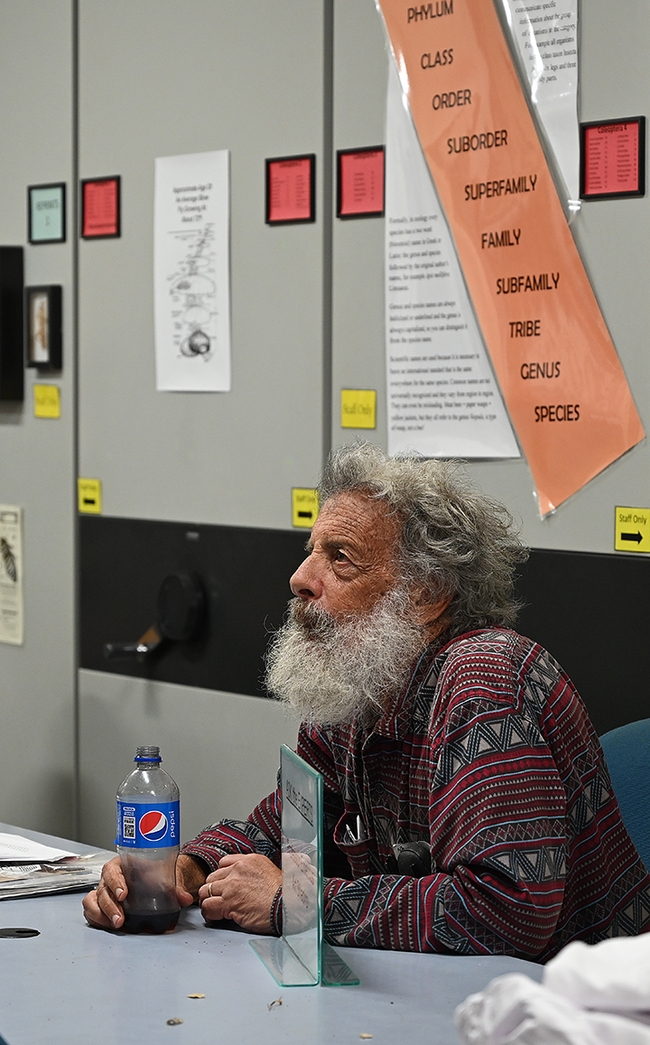
He points out that he is a Lepidopterist but "not a monarch specialist."
Shapiro's 10 monitoring sites stretch from the Sacramento River Delta through the Sacramento Valley and Sierra Nevada mountains to the high desert of the Western Great Basin. The largest and oldest database in North America, it was recently cited by British conservation biologist Chris Thomas in a worldwide study of insect biomass.
Shapiro records his research on his website at http://butterfly.ucdavis.edu/.
At the Bohart Museum open house, his topics included the research that he co-authored, "Understanding a Migratory Species in a Changing World: Climatic Effects and Demographic Declines in the Western Monarch Revealed by Four Decades of Intensive Monitoring" (Anne Espeset et al), published in Oecologica in 2017. Professor Matthew Forister of the University of Nevada, one of his former graduate students, is among the co-authors.
The abstract: "Migratory animals pose unique challenges for conservation biologists, and we have much to learn about how migratory species respond to drivers of global change. Research has cast doubt on the stability of the eastern monarch butterfly (Danaus plexippus) population in North America, but the western monarchs have not been as intensively examined. Using a Bayesian hierarchical model, sightings of western monarchs over approximately 40 years were investigated using summer flight records from ten sites along an elevational transect in Northern California. Multiple weather variables were examined, including local and regional temperature and precipitation. Population trends from the ten focal sites and a subset of western overwintering sites were compared to summer and overwintering data from the eastern migration. Records showed western overwintering grounds and western breeding grounds had negative trends over time, with declines concentrated early in the breeding season, which were potentially more severe than in the eastern population. Temporal variation in the western monarch also appears to be largely independent of (uncorrelated with) the dynamics in the east. For our focal sites, warmer temperatures had positive effects during winter and spring, and precipitation had a positive effect during spring. These climatic associations add to our understanding of biotic-abiotic interactions in a migratory butterfly, but shifting climatic conditions do not explain the overall, long-term, negative population trajectory observed in our data."

Handout. "When I was asked to participate in this event, it got me thinking…" Shapiro began in his monarch comments handout.
"My group did an analysis of the Monarch vis-à-vis climate in a 2017 paper (Espeset et al.,, DOI: 10.1007/s00442-01607600-1) None of my group is a Monarch specialist, and that includes me. Since 1999 I have done counts of all butterfly species at 4 Valley sites (Suisun, West Sacramento, North Sacramento and Rancho Cordova) using standard “Pollard walk” methods, slightly modified. As a result we have a quantitative picture of Monarchs in breeding season... Such data are very rare. Population estimates of Monarchs are typically based on the overwintering (non-breeding) aggregations and we know from published material that what breeding-season data exist routinely diverge from the overwintering data. That is, trends in population size as measured by overwinter animals are not routinely reflected in the summer numbers. There can be a variety of explanations for this. To me the most likely is that as a very mobile species, the Monarch may breed in different places in different years, so that a monitoring program like mine, based on a limited number of fixed, Intensively-monitored sites, is unlikely to capture this stochasticity in where Monarchs breed. I am attaching the overwintering estimates from the Xerces Society. Direct quantitative comparisons are inappropriate, but you can judge how well the local trends match them just by eyeball (until we develop a convincing statistical approach to the problem!)
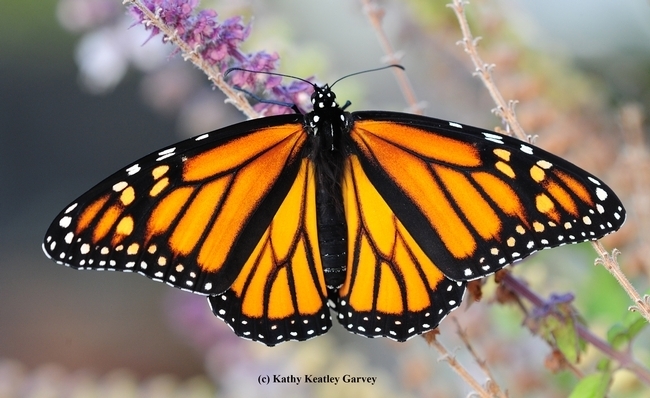
"My assignment for today forced me back to the original data for my Valley sites. The actual data are reproduced on the attached sheets. It is immediately evident that:
- There is very high variability in Monarch numbers among years at all sites, but
- There are short-term trends that may be associated with climatic fluctuations, in particular drought, and
- Among my sites, Suisun has had the highest counts, partly but not entirely reflecting coastward migration from farther inland early in the season, but these high numbers have effectively disappeared—perhaps reflecting a systematic change in migratory trajectories, and
- Rancho Cordova has very consistently had the lowest counts, with little year-to-year variation compared to other sites..
"My interest is now piqued and I am going to go with this. From 1972 to 1998 at all sites, and from 1972 to date at our 5 mountain sites, monitoring was on a presence/absence basis only because there are too many species to Pollard-count simultaneously. But the seasonal distribution of the Monarch is still easily extracted. We know Monarch breeding seasonality has changed over the 50-year time span of this study. We also have devised and published methods to use presence-absence data (“day-positives”) as a crude proxy for population trends. This is perhaps a good moment to revisit the Espeset et al. paper and try to get into the specific components of Monarch trends. Suggestions are welcome!" (amshapiro@ucdavis.edu)
Shapiro, who joined the UC Davis faculty in 1971, continues his research. The author of the book, Field Guide to Butterflies of the San Francisco Bay Area and Sacramento Valley Regions, he has studied more than 160 species of butterflies in his transect.
Attached Images:
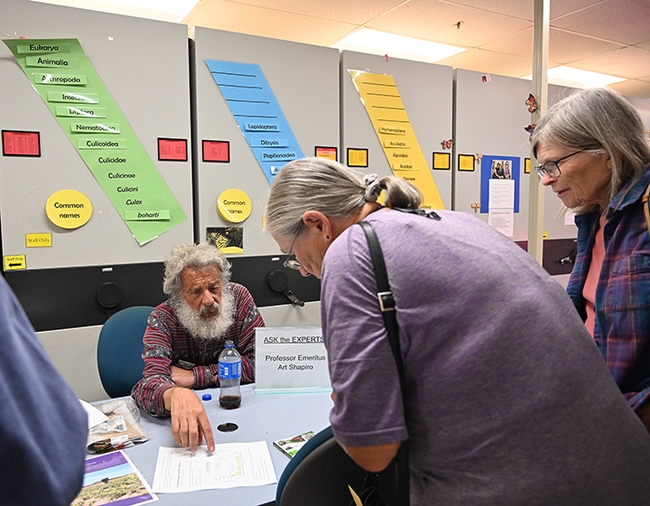
UC Davis distinguished professor emeritus Art Shapiro explains some of his research documentation at the Bohart Museum of Entomology open house on monarchs. (Photo by Kathy Keatley Garvey)
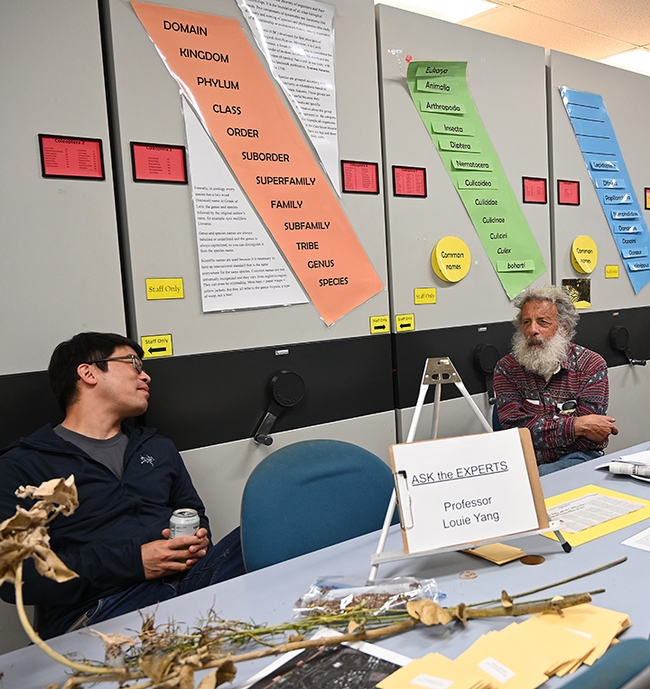
Professor Louie Yang (left) of the UC Davis Department of Entomology and Nematology, chats with UC Davis distinguished professor emeritus Art Shapiro of the Department of Evolution and Ecology during the Bohart Museum's open house on monarchs. (Photo by Kathy Keatley Garvey)
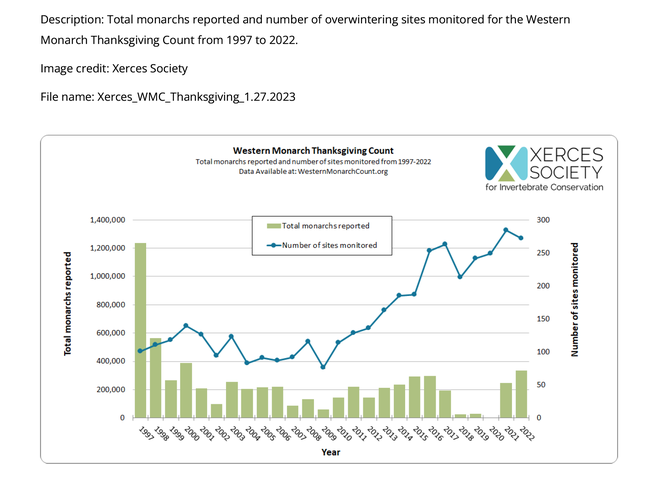
This document provided by Xerces Society of Invertebrate Conservation shows the number of monarchs overwintering along the California coast since 1997. Source: its annual Thanksgiving season count.
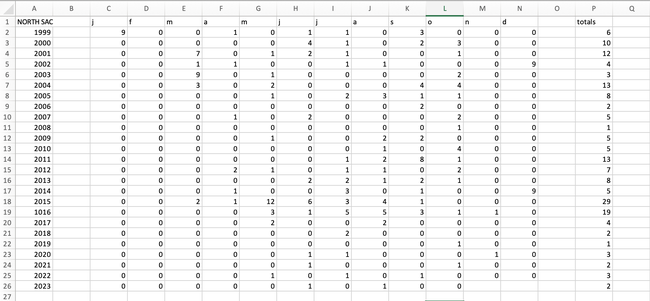
These are the monarch sightings that UC Davis distinguished professor Art Shapiro has recorded in his North and West Sacramento monitoring sites since 1999.
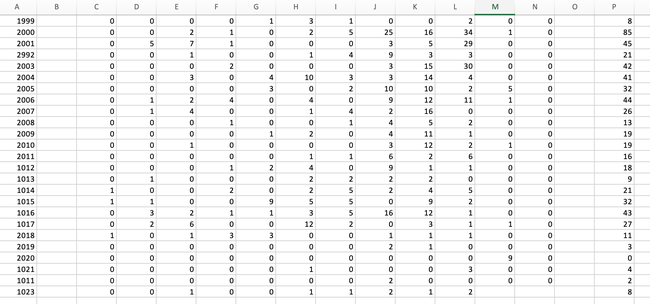
These are the monarch sightings that UC Davis distinguished professor Art Shapiro has recorded in his Rancho Cordova and Suisun monitoring sites since 1999.